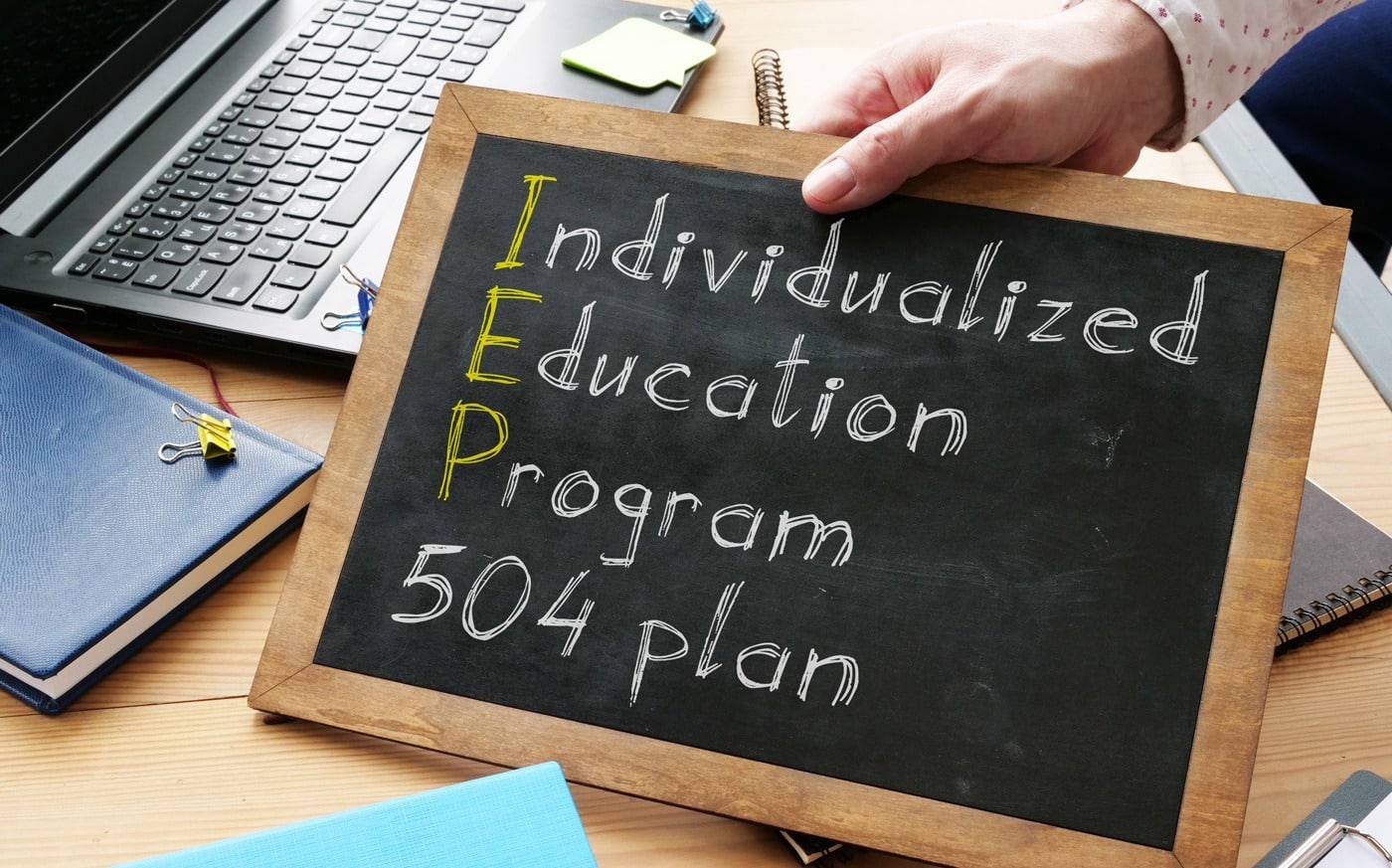 In the world of special education, you may hear the terms IEP and 504.
In the world of special education, you may hear the terms IEP and 504.
They are similar in that they each provide support for a child who needs additional assistance at school. The goals may be the same, however, the qualifications, requirements, and implementations for each plan are different. Understanding which one is right for your child requires an in-depth look at what they are and how one qualifies.
IEP
An IEP is short for an Individualized Education Plan. By law, as stated in the Individuals with Disabilities Act (IDEA), students with a disability must be provided with a Free Appropriate Public Education tailored to their individual needs. To qualify for an IEP, students must have met one or more of the 13 disabilities listed in the IDEA, including ADHD and LD. As a result of their disability, the student needs special education services to progress in school. An IEP is a service-based learning intervention.
Documentation is required before an IEP can be created. Therefore, a student must be evaluated for an area of disability. The original date of diagnosis will also help factor into when the plan can be implemented.
504 Plans
A “504 Plan,” short for section 504 of the Rehabilitation Act of 1973 as amended, is a civil rights law that prohibits discrimination on the basis of disability. This law applies to public elementary and secondary schools, among other entities. Students who are not eligible for an IEP might qualify and/or be served under a 504 accommodation plan. Section 504 defines a person with a disability as someone who has a physical or mental impairment that substantially limits one or more major life activities such as reading or concentrating.
Information on how a condition substantially limits one or more major life activities is required for a 504 plan. Oftentimes the evaluation for an IEP is the jumping-off point for a 504 plan.
Differences
The most notable difference is that an IEP is service-based and a 504 is an accommodation plan.
So what does that look like in action?
An IEP includes:
- A written statement for a child with a disability that is developed, reviewed, and revised through a series of meetings.
- An IEP delivers Direct Service to your child.
As a parent, you steer the ship for this process. The school cannot start an IEP without the parents’ approval.
An IEP can also include:
- Present level of performance (where your students is at currently, ie reading, math)
- Measurable annual goals
- Description of progress
- Statements of Service
- Statement of participation in non-special education
- Statement of individual appropriate accommodations
A 504 plan includes:
A 504 plan (public school) or Accommodation Plan (Private school) is a written statement of accommodations for students.
Accommodations can include:
- Extra time on tests
- Preferential seating
- Testing in a separate room
- Shortened or modified homework assignments
- Breaking down large assignments into smaller steps
- Copies of lecture notes
- Audiobooks or access to digital versions of textbooks
- Use of Electronic Assistance (ie personal computer, tablet, etc.)
It is important to note that private schools rarely modify.
Conclusion
Once your student is evaluated, and you meet with the special education coordinator at your school, together you will decide which is the best plan for your child. Remember you know your child best and can advocate for them which one you both will be most comfortable implementing. Starting a plan and continuing to evaluate it will be the best road to success.
If you look at the big picture after a diagnosis, you might also want to evaluate if your child is at the right school to meet their needs. There are various options in public and some private schools geared toward these accommodations. A better understanding of the plan options will hopefully help you to make a more informed decision for your student.
A conversation with a Groves Family Navigator is the first step to finding an individualized learning solution for your student:
NEVER MISS AN UPDATE
Don’t forget to sign up for our news and blog updates in the blue box below- and follow us on social media.
LinkedIn | Facebook | YouTube | Twitter | Instagram
Share your news, success story, or meaningful moment about Groves through our online form.

